
Constructed by Newport Workshops in 1910.
A modification of the DD class design, shown by exhibits D2 604 and D3 635. All class members were built by Newport Workshops.
This type mainly saw service as suburban passenger engines prior to electrification on the longer and hillier lines, including Dandenong, Upper Ferntree Gully, Lilydale and Darling.
Following electrification the class were put to work as shunting engines, primarily at Flinders St and North Melbourne.
This exhibit is currently undergoing cosmetic restoration.
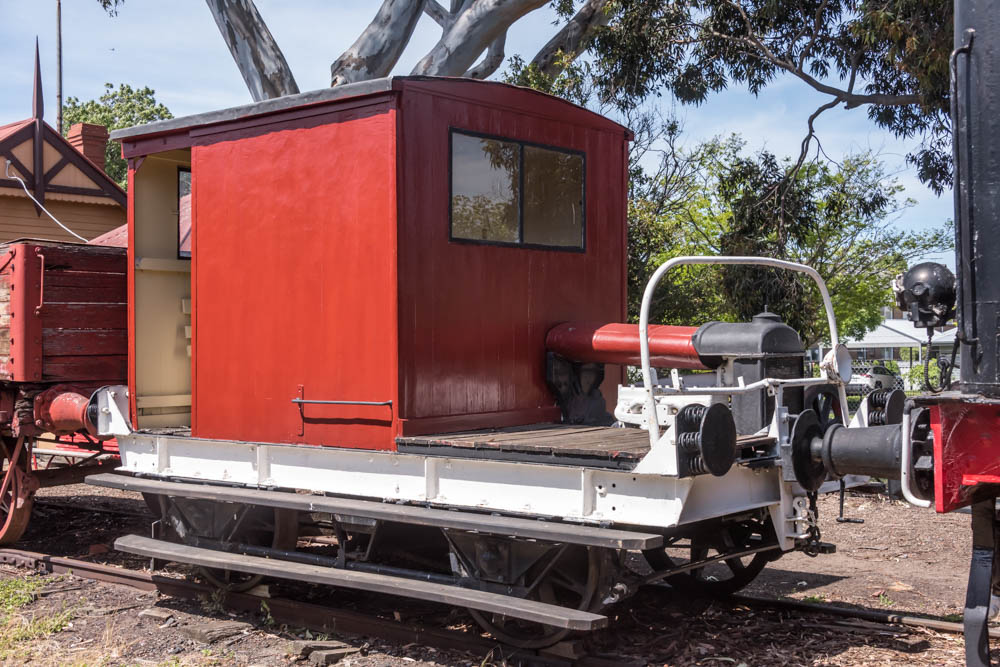
Constructed at Newport Workshops in 1932, and used on the construction of the Yarrawonga – Oaklands line.
First of a series of “Railtractors”, lightweight locomotives built on disused wagon underframes and fitted with a Fordson tractor engine. They were mainly used for shunting at remote places where staff who could use a tractor would be able to shunt the yards.
Constructed by Phoenix Foundry Ballarat, to a design by Kitson and Co of Leeds, in 1889.
The largest and most powerful 0-6-0 steam locomotives in Australia, the class of 32 were used commonly on passenger service around Melbourne before electrification, and on local freight services.
Y108 was the last of the class to be retired in 1963 as North Melbourne yard pilot.
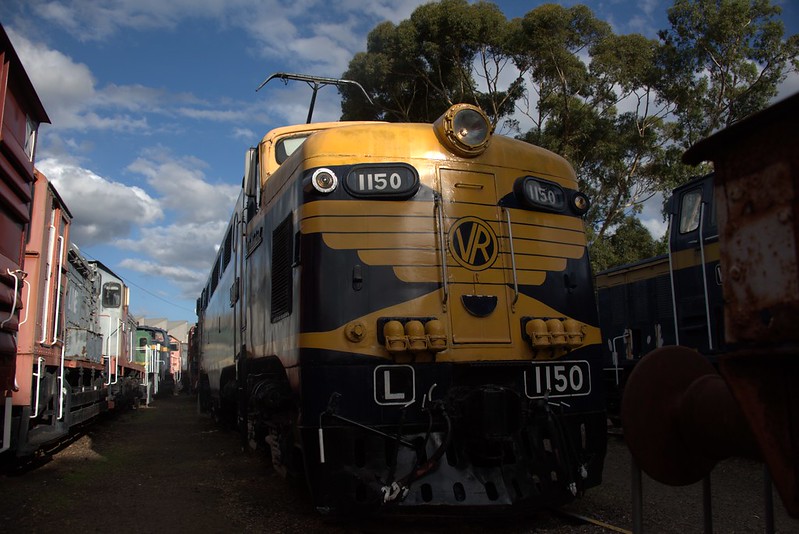
25 L class locomotives were constructed by English Electric and imported between 1953 / 1954.
L1150 was the first of the class and entered service in April 1953.
The class were designed for use hauling briquettes and brown coal from the Morwell and Yallourn mines, and passenger service to Geelong and Traralgon. Only the Traralgon line was electrified, and most of the class were stored at Newport Workshops while this took place.
L1150 was named “R. J. Wishart” in a ceremony on Traralgon platform to mark the opening of the electrified line.
Primarily the L class worked the Traralgon passenger services Monday-Saturday (overhead was turned off on Sundays and B class diesel electrics took over), and a diesel T class would be attached to continue the train to Sale, Bairnsdale and Orbost. They also saw service on Melbourne suburban goods to Fairfield, Ringwood, Port Melbourne and other stations across the network.
With the demise of the mine traffic, the requirement for replacing the overhead, and increasing locomotive failures requiring 2 locomotives to run together at all times, the class was withdrawn and the line de-electrified by 1988.
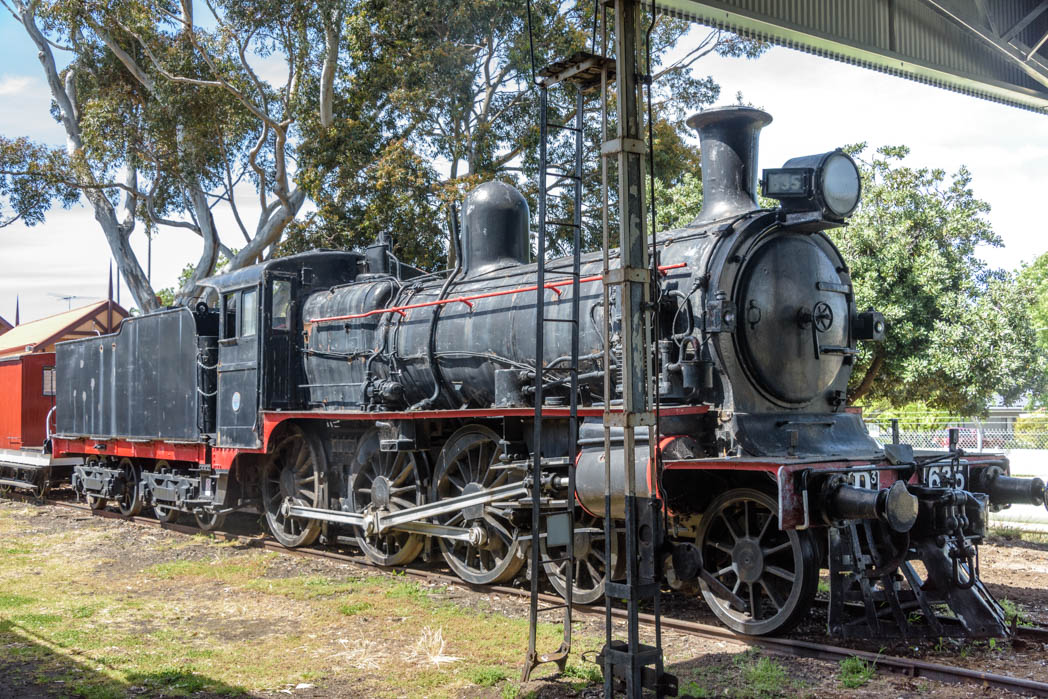
The D3 class were introduced in 1902 as the DD class, and were later reclassed to D1, D2 and D3 as modifications were made.
The class were constructed by a number of manufacturers, including Thompson\’s Foundry Castlemaine, Walker\’s Maryborough (Qld), Baldwin Locomotive Works of Philadelphia, Beyer Peacock, and the Newport Workshops. This was one of the last times the VR used private manufacturers for locomotive construction.
D3 635 is one of very few imported Baldwin Locomotive Works locomotives in Australia, and believed to be one of the only remaining 5\’3\” gauge Baldwin locomotives in the world.
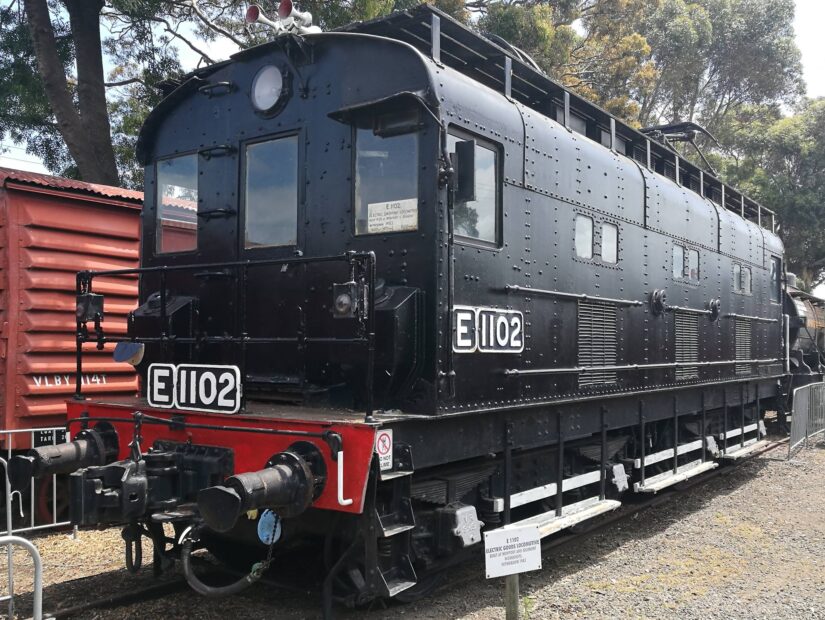
Following the electrification of Melbourne’s suburban area and an increase in local freight the Victorian Railways constructed 2 new electric locomotives with the same electrical equipment as the suburban passenger trains.
These proved so useful that the VR constructed an additional 10 units to a modified design.
E1102 is the first of the second batch of electric locomotives, built at Jolimont and Newport Workshops in 1928. It was not given the class E until 1955 when the E class steam locomotives were withdrawn, in fact the E class plates off the steam locmotives were reused on the electric.
The original 2 units were scrapped in 1955 following a collision at Fairfield.
The class saw use on light local freights across the network, and one was usually used as a shunter at Warragul.
The E class were withdrawn in the early 1980s, E1102 one of the last in service in 1983.

Constructed by David Munro workshops.
Originally identical in appearance to exhibit E236, but was modified by the Victorian Railways to 0-6-2 wheel configuration. ]
E369 ended service as Newport Workshops yard pilot in 1972.
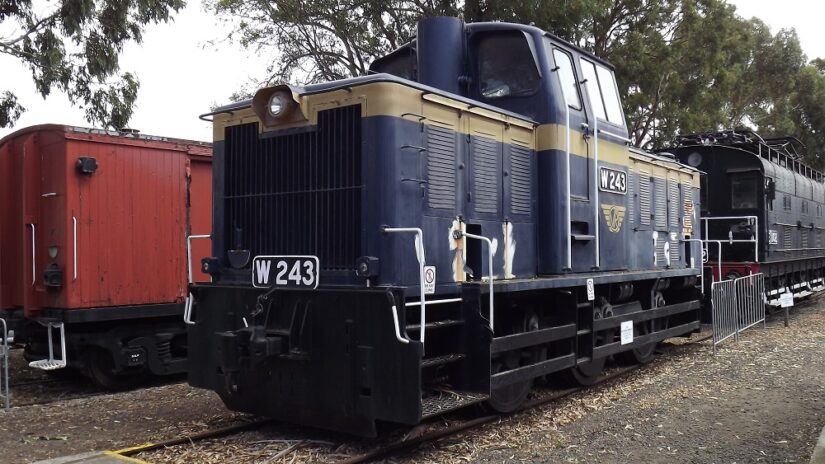
Constructed by Tulloch, Rhodes NSW and entered service February 1960.
Ended service as a shunter at Spotswood yard.
Designed as a shunting engine for the many Victorian Railways yards, but also saw service on Werribee passenger services (briefly) and branchline freight.
The class as a whole were plagued with engine and transmission problems that led to them being very unpopular with crews and fitters.
The original Mercedes engines were replaced with GM versions, but many of the issues persisted. Exhibit W255 shows the modifications for the newer engine.
W243 is the last unit in existance with the original Mercedes engine.
Photo by Andrew Henderson
Constructed by Newport Workshops and entered service in August 1913 as A 848.
It was modified with a superheated boiler, smoke deflectors, and renumbered A2 884 in the early 1930s, and retired in 1963.
Of the 125 constructed with outside Stephenson\’s Valve Gear, 884 is the sole survivor. Exhibit A2 995 displays the later more accessible Walscheart\’s Valve Gear.
From their introduction in 1907 to their withdrawal in 1963 the A2 class were a versatile staple of the Victorian Railways, with 185 class members running everything from The Overland to Serviceton, the Spirit of Progress, and goods trains across the state. By the late 1950s the class were progressively removed from service with the introduction of the B and R classes.
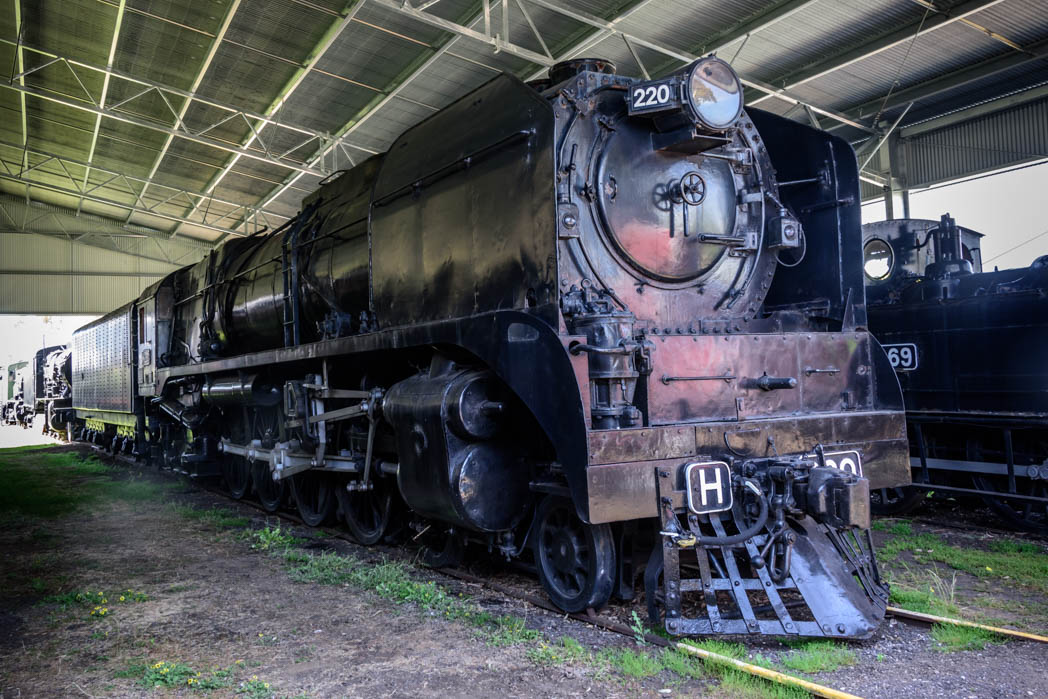
Constructed at Newport Workshops in 1941 and retired in 1956. The largest engine constructed by the Victorian Railways, and believed to be the largest non-articulated locomotive in the Southern Hemisphere.
3 of this class were to be built to run the Overland to Adelaide without double heading A2 class locomotives, but due to wartime requirements and weight restrictions on the Parwan River bridge only 1 was constructed and spent its life on the North-East line. The only 3 turntables in Victoria that could accomodate it without splitting the engine and tender were at North Melbourne, Albury and Ararat.
H220 would occasionally fill in on the Spirit of Progress when an S class steam locomotive was not available, but mostly ran goods trains between Melbourne and Albury, and occasionally Tocumwal.







